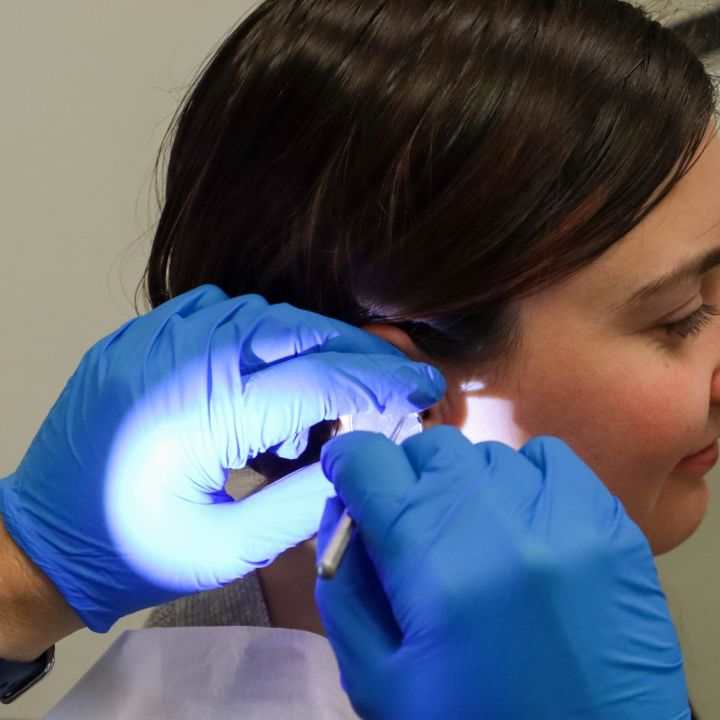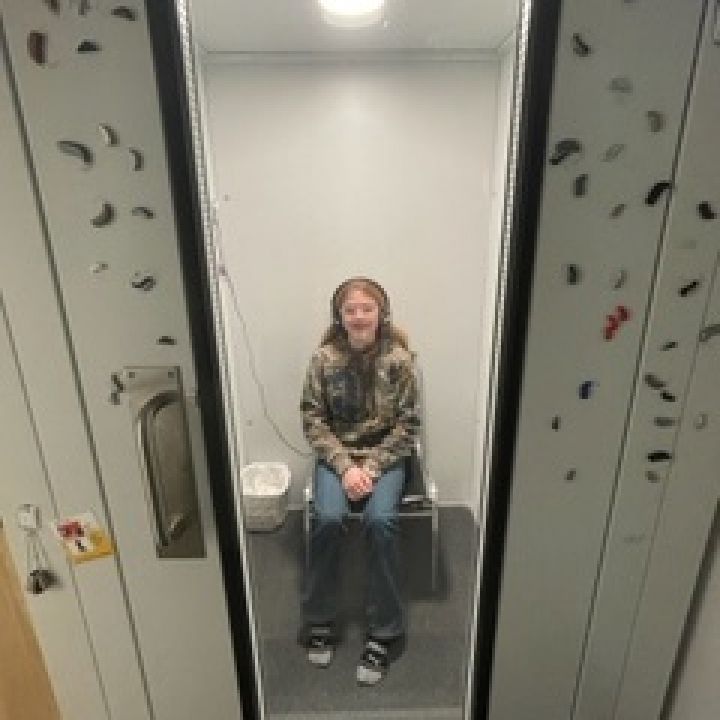Hearing Aids
 BTE
BTE

 RITE
RITE

 ITE
ITE

 ITC
ITC

 CIC
CIC

Hearing Aid Dispensing and Fitting
- Periodical follow up appointments through your 60 day trial period as needed.
- 4 year comprehensive warranty for Premium level devices.
- 3 year comprehensive warranty for all other technology levels.
- Up to 2 year loss/damage policy.
- Unlimited in-office hearing aid cleaning, service and adjustments by appointment throughout your warranty.
WHAT COMES NEXT?
Once you have selected your hearing aids after an evaluation, your audiologist will program them, based on a prescription, to meet your hearing needs. The audiologist will explain how to use the devices, how to put them in the ear and how to remove them, how to change or charge batteries and how to care for and clean the devices. This appointment will generally take about one hour. It is also a good idea to bring a family member or close friend to the hearing aid fitting so they can help remember all the information that is given and be a support to you. Don’t be afraid to ask for written instructions, which can help you better retain the information.

UNDERSTANDING YOUR HEARING AIDS
When you put the hearing aids in for the first time, you may have different emotions about the sounds you hear. This is normal and to be expected! The goal of the hearing aid is to make everyday sounds audible and comfortable, but the sound you hear should be clear and pleasant. The audiologist should do additional testing (Real Ear Measurements) to make sure that the hearing aids are giving you enough sound where you need it. Additionally, remember to ask any questions or discuss any concerns you may have.
You may also be given a short survey or list of questions to answer. Be honest about what you hear so that we can work with you to create the best listening experience with your new hearing aids. Your hearing aid fitting is only a starting place; other changes to customize the hearing to your liking may need to take place over a few appointments.

HEARING AID MAINTENANCE AND REPAIR
Hearing aids are comprised of tiny electrical components that may experience wear and tear over time. If this is the case, you’ll likely need to visit your hearing professional to have the problem assessed. Whether it’s simply due to aging or the units have been exposed to moisture, excessive wax, debris or physical damage, you’ll want your audiologist to evaluate the extent of repairs needed.
COMMON HEARING AID ISSUES
You may try to turn the hearing aid on in the morning and find that there is no sound or you may find that the battery door has come unhinged. These things do happen, even when the hearing aids are properly cared for. If you should experience an issue that requires a repair, bring the hearing aids to our office. We are equipped and trained to evaluate and diagnose broken hearing aids. Some minor hearing aid repairs can be done in the office setting in a short period of time; others may need to be sent to the manufacturer for repair. We can help determine what kind of a repair is necessary if you feel your hearing aid is not working properly.
HEARING AID REPAIRS
If you are a current patient or you have hearing aids that were not fit in our office, we are happy to try to repair your hearing aids or even re-program them to bring new life to them if we are able. We are able to service most major manufacturers of hearing aids and can advise you as to whether yours is a brand we service. Hearing aids come with a warranty when purchased new. If your warranty has expired, it is still possible to repair most hearing aids for a small fee depending on the extent of the repair and the age of the hearing aid. Depending on the hearing aid manufacturer, this repair may come with a new year-long warranty. In the event your hearing aid is severely damaged and unable to be repaired, we will work with you to determine what devices would be best for your current needs. We will provide you with details when you bring your hearing aid into the office.
HEARING AID MAINTENANCE
One easy way to keep your hearing aids in good working order is by properly caring for and maintaining the devices. Remember to talk with your hearing care professional if you discover any kind of malfunction or damage to your device.

CUSTOM HEARING PROTECTION
your ears deserve it
We have a wide selection of custom hearing protection options for professionals in fields that create enough noise to be dangerous. Wearing hearing protection in these areas is not only mandatory due to OH&S regulations but it’s also just good common sense. Noise above 70 dB over a prolonged period of time may start to damage your hearing. Loud noise above 120 dB can cause immediate harm to your ears. The average noise in, for example, a steel plant is anywhere from 84 to 120 dB! The most common reason people choose NOT to wear protection on the job is because it can be uncomfortable. And it can!

That’s where we come in. Leake Audiology Services Inc. spends most of its day in and around peoples ears! We are experts at making our devices as comfortable as humanly possible. We have a wide range of custom hearing protection devices for just about every high risk profession, and we custom fit them all to your ear. This ensures the maxium possible comfort letting you focus on your job. This increases your productivity and your overall job satisfaction. Tell your boss that buying custom hearing protection from Leake Audiology Services will actually increase his revenue, while also making your job satisfaction soar.


